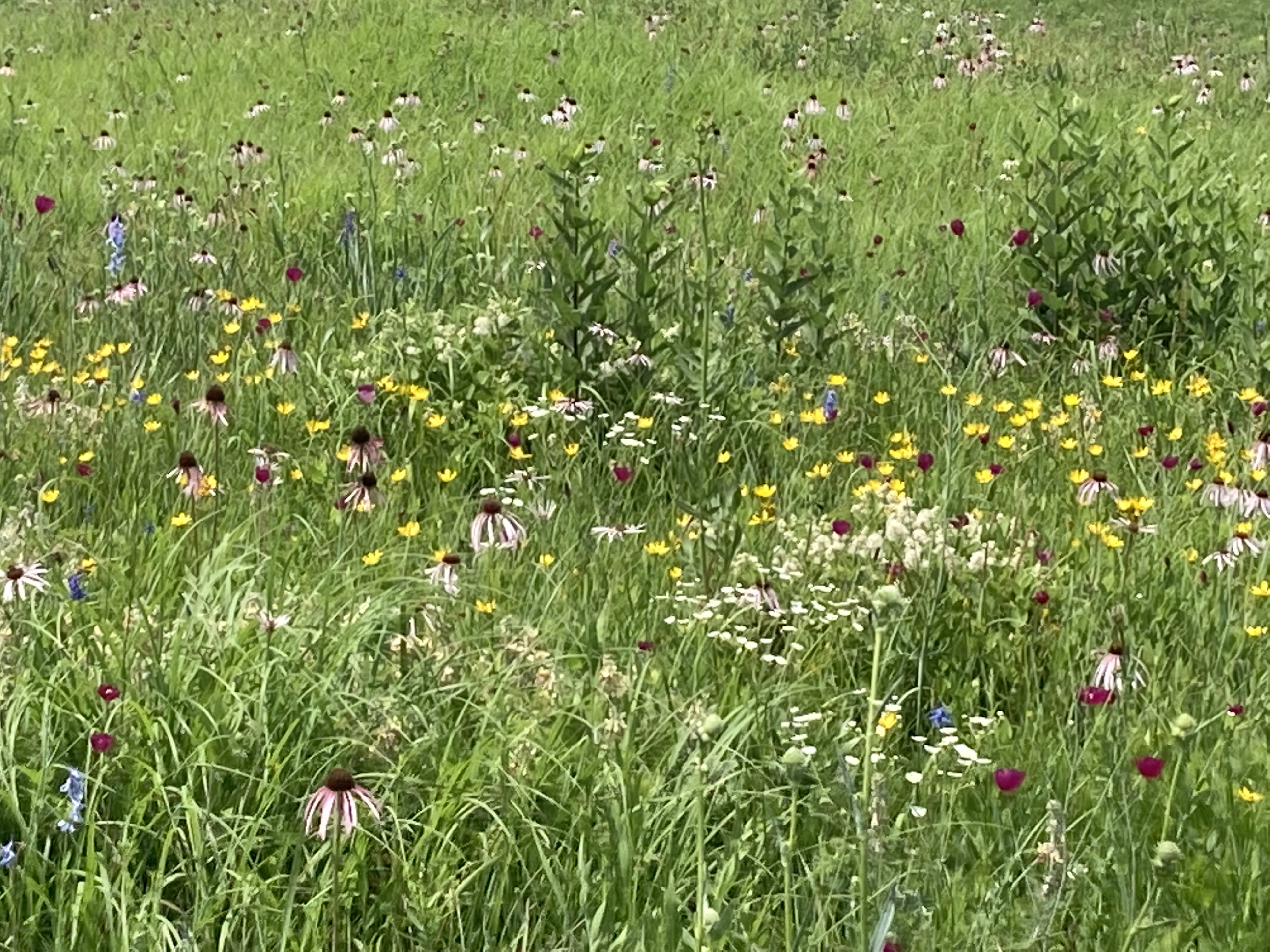Prairie Places in Arkansas
Contact
University of Arkansas System Division of Agriculture
Cooperative Extension Service
2301 S. University Ave.
Little Rock, AR 72204

Prairie Places in Arkansas
During the second week of June a friend and I had the pleasure of walking through Baker Prairie in Harrison and catching it at or near its peak summertime bloom. It was a glorious sight. We counted two dozen forbs in bloom including pale cone flower, tall poppy mallow, rattlesnake master, coreopsis and a number of other equally beautiful plants. Photos don’t do justice for these spectacular spaces. And photos just show a single glimpse in time. One specific moment. To really appreciate the parade of blooms that appear in the sea of grass throughout the year, it must be visited often.
Arkansas was never a full-on prairie state but the western counties from Waldron to the Missouri line had a significant expanse of open prairie land when white settlement began. In 1858 when the first transcontinental reporter rode the Butterfield Mail coach from near St. Louis to San Francisco, he described Fayetteville as being “a prairie in the mountains.” The southeastern corner of the state also had prairies spreading in from Texas. But the largest prairie was in the alluvial plain of the Mississippi River, the Grand Prairie which was almost completely plowed under when it was discovered the hard pan layer beneath the prairie made excellent land for growing rice.
Prairies mostly grow on flat terrain so they are easy to plow and develop. Considerably less than one percent of our original natural prairies still persist, but since the 1980s there has been a focused effort to preserve them. The Arkansas Natural Heritage Commission has led the effort, usually partnering with another organization to save, restore and protect as much land as possible. About a dozen prairie tracts scattered around the state are in their folio of lands.
Baker Prairie is unusual, for this 71 acre tract (out of about 5000 original acres) sits on a base of chert, making it the largest chert prairie known. It is also unusual because it has never been overgrown by invading trees, grossly overgrazed or mismanaged in the many ways that can befall a fragile ecosystem. The diversity of plants found there and their associated animal counterparts attest that this special place is an intact, albeit small, prairie ecosystem.
In northwest Arkansas, the 10 acre Searles Prairie in Rogers and the 60 acre Chesny Prairie near Siloam Springs are wetter sites and present a different array of plants. The Cherokee Prairie south of Fort Smith consists of three tracts that total more than 500 acres and again have a unique mixture of plants and animals associated with them. None of these parcels have been left alone during the past 200 years, but neither have they have not been plowed, so recovery and reestablishment of a typical tall grass prairie habitat is still possible.
The Grand Prairie in the Mississippi River floodplain of eastern Arkansas is unusual because it was a 400,000 acre island of grass in a sea of trees. The dense, shallow subsoil layer of clay didn’t allow tree roots to sink deep into the subsoil to get the moisture they needed to survive, so a tall grass prairie flourished instead. Prairie fires, often set by the native inhabitants of the region, helped keep the area clear of trees.
Then farmers discovered this clay pan of soil was perfect for keeping water on the surface so rice could be grown. In short order, nearly all of the prairie was plowed under and planted to rice. Several Grand Prairie remnants remain, including the 24 acre Downs Prairie, the 41 acre Roth Prairie and, perhaps best of all, the 250 acre Railroad Prairie Natural Area, which contains an intact prairie ecosystem — though in a long and skinny format.
The largest prairie restoration project is in southwestern Arkansas, where a patchwork of almost 10,000 acres is being protected as a part of a Wildlife Management Area. This is the black lands region which again has a unique flora that extends in from Texas and Louisiana.
These patches of prairie, though postage stamp sized, provide refuge for plants and animals that once dominated the land. Seeing them, enjoying their subtle beauty and charm and continuing to protect them is the least we can do in these crazy times.
